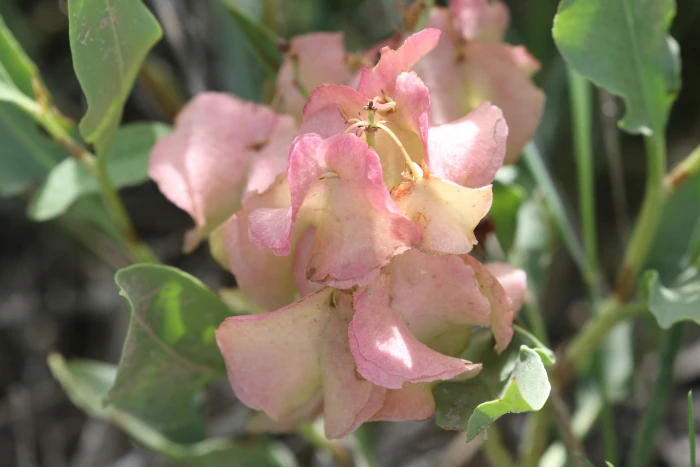Veiny Dock
(Rumex venosus)
Veiny Dock (Rumex venosus)
/
/

© Brooke Smith
CC BY 4.0
Image By:
© Brooke Smith
Recorded By:
Copyright:
CC BY 4.0
Copyright Notice:
Photo by: © Brooke Smith | License Type: CC BY 4.0 | License URL: http://creativecommons.org/licenses/by/4.0/ | Uploader: bgsmith | Publisher: iNaturalist |

























Estimated Native Range
Climate Requirements for Moorpark, California
| This Plant | Your Site | Plant Suitability for Your Location | ||
|---|---|---|---|---|
| • Precipitation | 5" - 79" | 16" | You should be able to grow this plant with no additional irrigation. | Excellent |
| • High Temp. | 65°F - 98°F | 88°F | Your summer temperatures are normal for this plant. | Excellent |
| • Low Temp. | -3°F - 37°F | 42°F | OK, but your winter temperatures are warmer than normal for this plant | OK |
This plant will probably not grow well at your location.
Summary
Rumex venosus, commonly known as Veiny Dock, is a perennial herb native to a variety of habitats including sagebrush deserts, dunes, and sandy areas in central and western North America, ranging from the Canadian prairies to Mexico. It is often found in heavily grazed pastures and is typically avoided by livestock. Veiny Dock has decumbent to upright stems that reach 2-8 inches in height and grows from a creeping rhizome. Its lance-shaped leaves are 1-6 inches long with papery stipules. The plant features a densely flowered inflorescence with inconspicuous green flowers. During the flowering season, the inner sepals turn pink, enlarge, and surround the achene, providing a subtle ornamental quality.
Veiny Dock is recognized for its ecological role as a food plant for the ruddy copper butterfly. It is not commonly used in cultivation due to its toxic oxalates, which can be harmful if ingested. However, it can be considered for naturalized areas or wildlife gardens where its ability to thrive in poor, sandy soils and its drought tolerance are advantageous. It requires minimal maintenance and can survive with little water once established. Gardeners should be aware of its potential to spread via rhizomes and manage its growth accordingly.CC BY-SA 4.0
Veiny Dock is recognized for its ecological role as a food plant for the ruddy copper butterfly. It is not commonly used in cultivation due to its toxic oxalates, which can be harmful if ingested. However, it can be considered for naturalized areas or wildlife gardens where its ability to thrive in poor, sandy soils and its drought tolerance are advantageous. It requires minimal maintenance and can survive with little water once established. Gardeners should be aware of its potential to spread via rhizomes and manage its growth accordingly.CC BY-SA 4.0
Plant Description
- Plant Type: Herb
- Height: 0.5-1.5 feet
- Width: 0.5-1.5 feet
- Growth Rate: Moderate
- Flower Color: Brown, Green, Red
- Flowering Season: Spring, Summer
- Leaf Retention: Semi-deciduous
Growth Requirements
- Sun: Full Sun
- Water: Low
- Drainage: Fast
Common Uses
Edible*Disclaimer: Easyscape's listed plant edibility is for informational use. Always verify the safety and proper identification of any plant before consumption., Erosion Control, Low Maintenance
Natural Habitat
Native to sagebrush deserts, dunes, and sandy areas in central and western North America
Other Names
Common Names: Veined Dock, Winged Dock, Wild Begonia, Wild Hydrangea, Sand Dock
Scientific Names: Rumex venosus, Lapathum venosum
GBIF Accepted Name: Rumex venosus